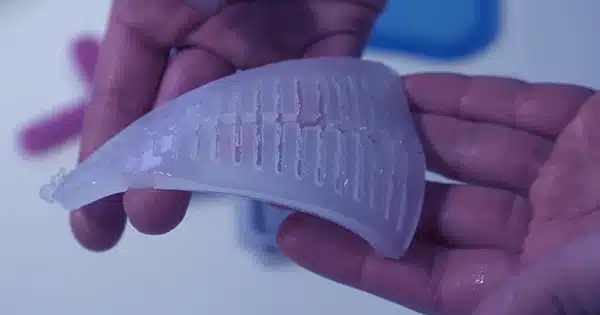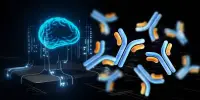Researchers at North Carolina State University have demonstrated a caterpillar-like soft robot that can move forward, backward and dip under narrow spaces. The caterpillar-bot’s movement is driven by a novel pattern of silver nanowires that use heat to control the way the robot bends, allowing users to steer the robot in either direction.
According to Yong Zhu, corresponding author of a paper on the work and the Andrew A. Adams Distinguished Professor of Mechanical and Aerospace Engineering at NC State, “a caterpillar’s movement is controlled by local curvature of its body—its body curves differently when it pulls itself forward than it does when it pushes itself backward.”We’ve drawn inspiration from the caterpillar’s biomechanics to mimic that local curvature, and use nanowire heaters to control similar curvature and movement in the caterpillar-bot.
The development of soft robots that can move in two distinct ways presents a major task, according to Zhu.”We can regulate the robot’s mobility in two different ways thanks to the embedded nanowire heaters. By adjusting the flexible robot’s heating pattern, we can regulate which parts of the robot stretch. And by adjusting the quantity of heat delivered, we can regulate how much those sections bend.
Two polymer layers that make up the caterpillar-bot react to heat in various ways. When subjected to heat, the outermost layer shrinks or contracts. When heated, the upper covering enlarges. The growing polymer layer contains an embedded silver nanowire design. There are numerous lead spots on the pattern where experts can run an electric current. By applying an electric current to various lead spots, the researchers can regulate which regions of the nanowire pattern heat up and how much heat is generated by increasing or decreasing the quantity of current.
The paper’s first author and postdoctoral scholar at NC State, Shuang Wu, claims that they “demonstrated that the caterpillar-bot is capable of pulling itself forward and pushing itself backward.” “In general, it moved more quickly in either way the more current we applied. However, we discovered that there was an ideal cycle that allowed the polymer to cool, enabling the’muscle’ to successfully rest before contracting once more. The caterpillar-bot’s mobility was hampered if we attempted to cycle it too rapidly because the body did not have time to “relax” before contracting once more.
Additionally, the researchers showed that the caterpillar-bot’s motion could be regulated to the point where users could direct it to pass through a doorway-sized opening. In effect, the researchers had complete control over the robot’s forward and reverse movements as well as the height of its upward bending at any given time.
“This approach to driving motion in a soft robot is highly energy efficient, and we’re interested in exploring ways that we could make this process even more efficient,” Zhu says. “Additional next steps include integrating this approach to soft robot locomotion with sensors or other technologies for use in various applications—such as search-and-rescue devices.”
On March 22, the publication Science Advances will print an article titled “Caterpillar-Inspired Soft Crawling Robot with Distributed Programmable Thermal Actuation.” Jie Yin, an assistant professor of mechanical and aeronautical engineering at NC State, Yaoye Hong, a student there, and Yao Zhao, a postdoctoral scholar there, all contributed to the writing of the article.














